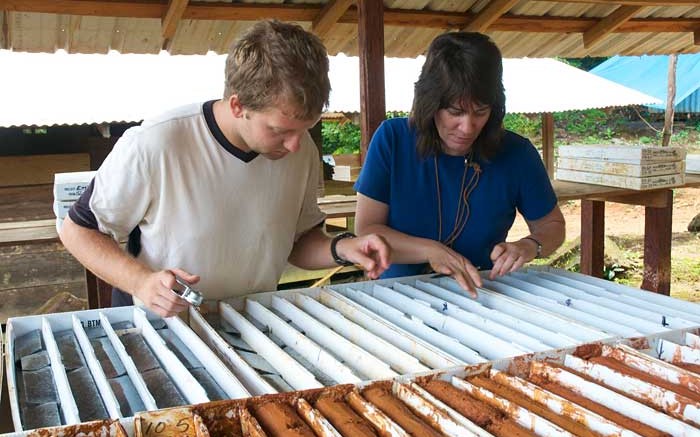VANCOUVER — When Goldsource Mines (TSXV: GXS; US-OTC: GXSFF) picked up the Eagle Mountain gold property in Guyana in May, chief operating officer Eric Fier and CEO Scott Drever highlighted that the project’s saprolite resources offered a quick path to production. And in late July the company took a step towards realizing that vision with a preliminary economic assessment (PEA) for a multi-phase development that appears to offer strong returns.
Situated 200 km southwest of the capital Georgetown, Eagle Mountain hosts 3.9 million indicated tonnes grading 1.49 grams gold per tonne for 188,000 contained oz., plus 20.6 million inferred tonnes of 1.19 grams gold for 792,000 oz.
The important technical variable, however, is that 40% of those global ounces sit in saprolite (highly weathered tropical rock) which should allow Goldsource to fast-track operations through low-cost mining and gravity processing.
Goldsource sees developing Eagle Mountain over four years, with each year involving an upgrade in processing capacity. In the first year mining would be at a daily rate of 1,000 tonnes, while the operation would be running at 4,000 tonnes per day by year four.
The company would use conventional open-cut mining and downhill-gravity slurry to transport the weathered material for processing.The strip ratio is just 0.9 to 1, and mining would require no blasting or truck hauling.
Total capital expenditures over four years would be US$24.2 million, with phase one expected to cost US$5.9 million. The company reports that 7.3 million tonnes grading 1.2 grams gold per tonne would be processed, with total production estimated at 168,700 oz. gold and cash costs assumed at US$480 per oz. over an eight-year mine life. Conceptually, the first four years of gold production would be 5,600, 14,400, 21,600 and 28,800 oz. gold.
“The creativity of the phased construction approach, its modular design and the simplicity of the mining and processing of the low-strip ratio saprolite material have resulted in an optimized development scenario for this deposit,” president Ioannis Tsitos notes. “In addition, the inventory of potentially recoverable oz. gold in the oversize materials and the underlying hard-rock resource provide us with a significant blue-sky potential for further development.”
Goldsource would end up with an inventory of 162,000 oz. gold in its settlement ponds from the gravity processing that could be milled at a later date using more advanced techniques. Also not considered in the PEA are Eagle Mountain’s in-situ “fresh-rock” resources of 2.3 million indicated tonnes at 1.52 grams gold for 114,000 contained oz. and 13.4 million inferred tonnes at 1.13 grams gold for 486,000 contained oz. Resource calculations use a 0.5-gram-gold cut-off grade.
Assuming a US$1,250 per oz. gold price Goldsource’s PEA features a 63% after-tax internal rate of return (IRR) and a US$46-million net present value (NPV) at a 5% discount rate. Pre-tax undiscounted operating cash flow before capital expenditures are estimated at US$123 million, while the project carries favourable sensitivity to a dip in commodity prices or recoveries.
Fier and Tsitos told The Northern Miner in May that the company was hoping to receive its operating permits later this year, and was targeting preliminary production at Eagle Mountain by year-end.
Goldsource is completing construction financing, and reported US$1.6 million in working capital at the end of March.
The company has traded within a 52-week window of 12¢ and 35¢ per share, and closed at 25¢ at press time after it announced the results of Eagle Mountain’s PEA.
Goldsource has 79 million shares outstanding for a $21 million market capitalization.


Be the first to comment on "Goldsource keeping it simple with Eagle Mountain PEA"